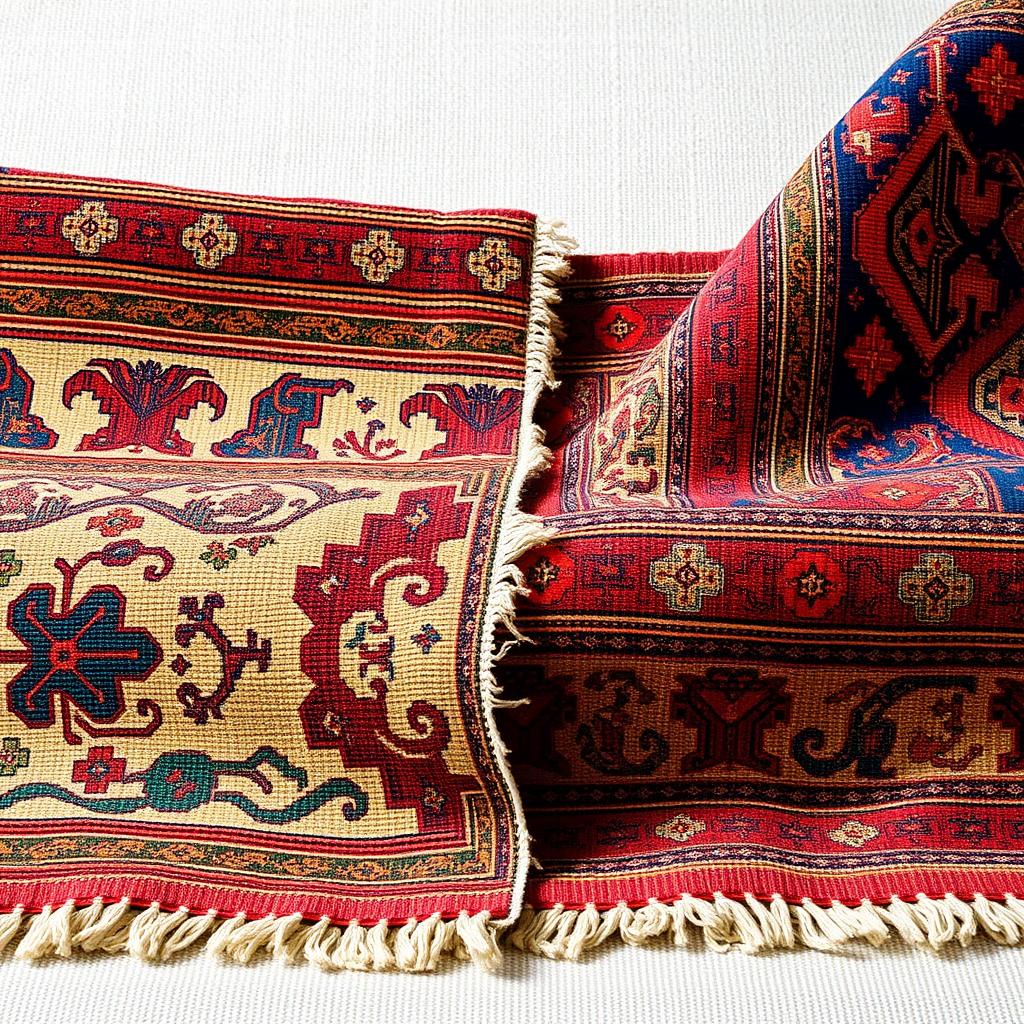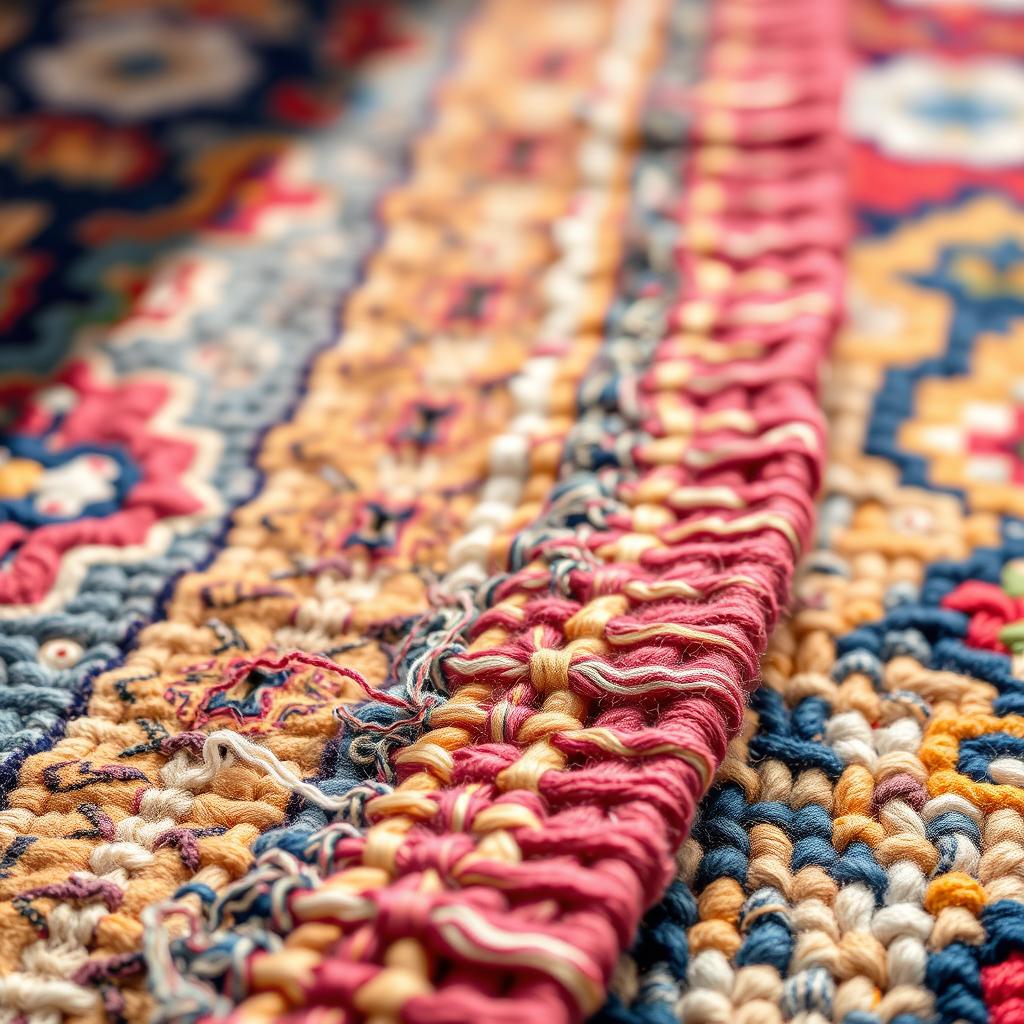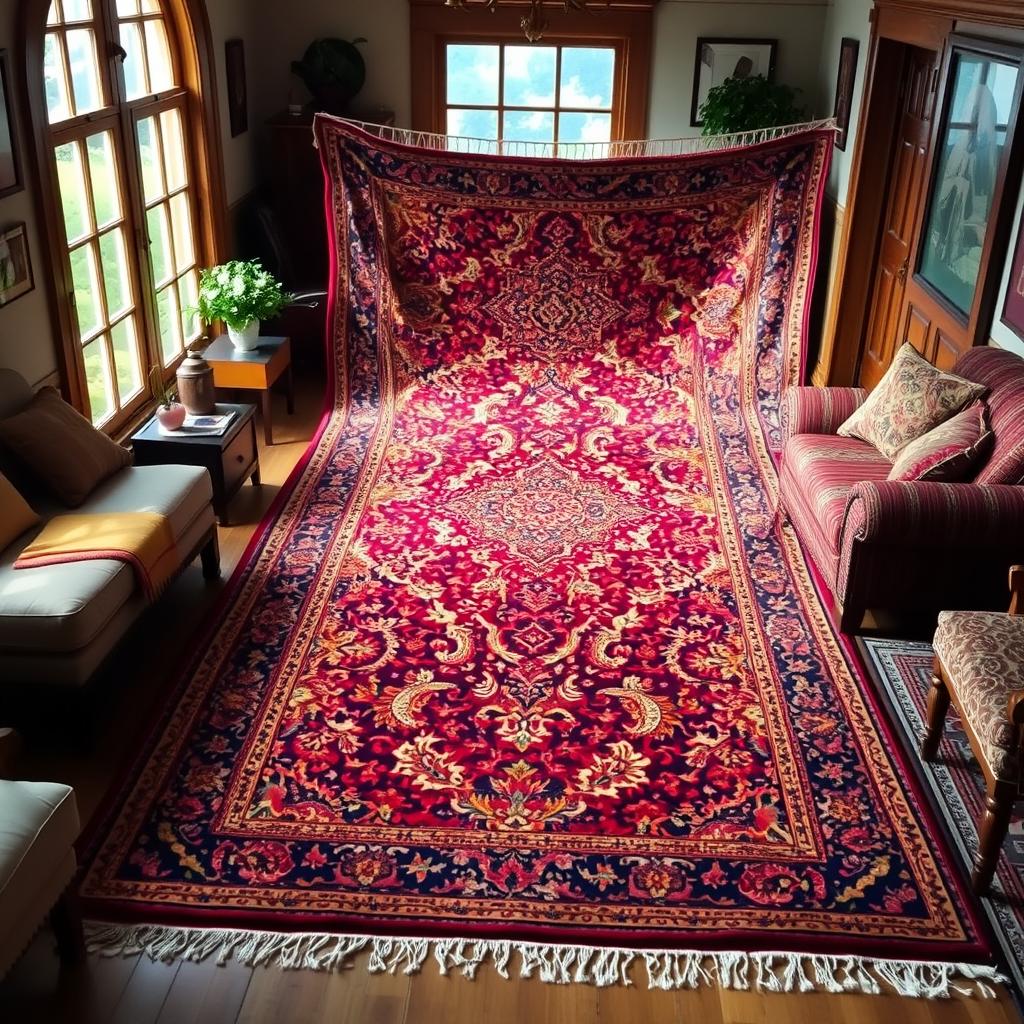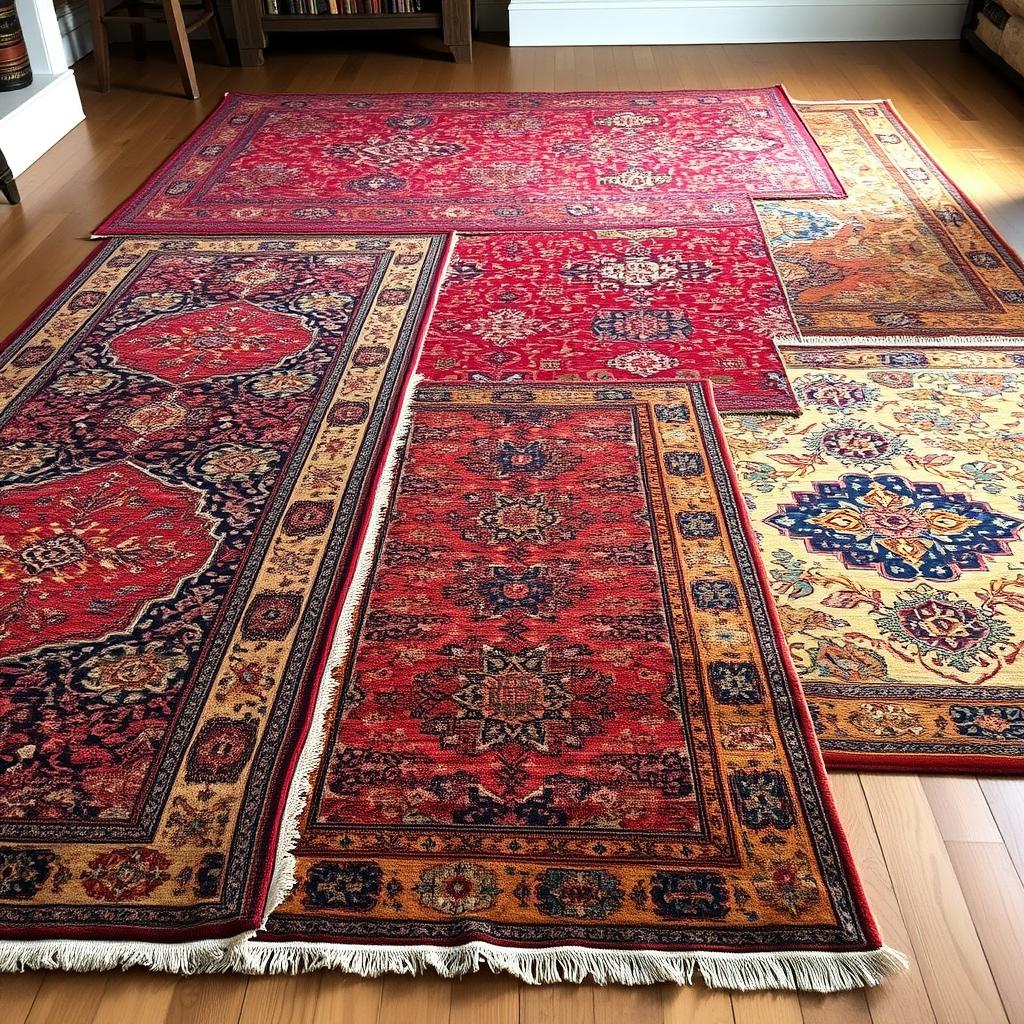In today’s world, we’re surrounded by mass-produced items. But the love for real, handmade things is growing. Spotting a handmade carpet from a fake one is a fun challenge. Can you find the clues in a rug’s patterns and folds that show it’s the real deal?
Click to use Silverigroup personal shopper services
Key Takeaways:
- Explore the historical significance and cultural impact of traditional carpet making
- Discover the essential tools and techniques for examining a handmade carpet
- Learn to identify pattern irregularities, color variations, and artistic details that distinguish handcrafted work
- Understand the differences in knot patterns and density between Persian and Turkish carpets
- Recognize the common signs that differentiate machine-made from handmade carpets
Understanding the Art of Handmade Carpets
Exploring handmade carpets, we find a world filled with history, tradition, and culture. From the detailed Persian rugs of the Middle East to the beautiful European tapestries, each carpet has a story. These stories go beyond time and place.
Historical Significance of Traditional Carpet Making
Handmade carpet-making has a long history, starting thousands of years ago in Central Asia. Over time, it has shown the unique cultures and art of different places. The Persian rug, for example, is known for its beauty and skill.
Click to buy antique rugs from Silverigroup
Different Types of Handmade Carpet Techniques
- Knotted carpets: This method comes from the nomadic cultures of the Middle East. Artisans tie knots to make detailed designs.
- Flat-woven carpets: Known as kilims, these are made by weaving threads. They are flat and can be turned over.
- Tufted carpets: A newer method, it uses yarn tufts pushed through a backing. It offers more design freedom.
Cultural Impact on Carpet Design
The designs on handmade carpets come from deep cultural roots. Turkish rugs have geometric patterns, while Moroccan berber carpets have symbolic images. Each carpet tells a story of its maker’s culture and traditions.

Essential Tools for Examining a Handmade Carpet
Authenticating handmade carpets requires the right tools. Experts use various instruments to check the details that make a carpet special. They look for signs that show it’s not made by machine. A high-quality magnifying glass is key. It lets them see the knots, fibers, and dye patterns up close. These details show the skill of the craftsman.
Measuring tools are also important. Experts use rulers and calipers to check the carpet’s quality. They measure the knots, pile thickness, and size. These measurements help understand the carpet’s making and the artisan’s skill. Carpet examiners also use special lighting and cameras. They document the carpet’s patterns, colors, and textures. This helps compare it to historical references and guides.
With the right tools and knowledge, checking a handmade carpet’s authenticity is a detailed and interesting task. It reveals the stories hidden in each design.
Visual Inspection: Front Side Characteristics
Looking at a handcrafted area rug or ethnic weaving gives us a lot of information. We can see the authenticity and skill in the front side. By checking the pattern, color changes, and details, we find what makes a handmade carpet special.
Pattern Irregularities and Natural Variations
Handmade carpets show small imperfections and natural changes in their patterns. These are signs of the human touch and the natural weaving process. Look for slight misalignments and unique asymmetries that make the design special.
Color Transitions and Dye Assessment
How colors blend on a handmade carpet tells us a lot. Notice the natural color shifts and gradients. These are from the artisanal dyeing methods. Also, look for muted, uneven colors, unlike the uniform look of machine-made carpets.
Design Elements and Artistic Details
- Intricate, hand-knotted motifs and patterns
- Unique, asymmetrical border designs
- Subtle variations in the density and spacing of the weave
- Distinctive knots, tassels, or fringes that add character
These artistic touches and design elements show the skill in handmade carpets. They reflect the weaver’s vision and personal touch, making each piece unique.

Examining the Reverse Side of Your Carpet
To truly assess the craftsmanship of a handmade carpet or oriental carpet, look at its reverse side. This often-overlooked aspect can reveal a wealth of insights about the carpet’s authenticity and quality.
One key indicator is the visibility of the knots. On a genuine handmade carpet, the knots should be clearly visible on the reverse side. This is because the weaver ties each knot by hand. In contrast, machine-made carpets have a smoother, more uniform backing with less distinct knot patterns.
The backing material itself can also provide clues. Authentic handmade carpets often feature a natural fiber backing, such as cotton or jute. Machine-made versions may use synthetic materials like polypropylene or polyester.
- Look for irregularities and variations in the backing, as these can be signs of a handmade process.
- Examine the edges, where the weft and warp threads meet, for a more uneven, hand-woven appearance.
By carefully inspecting the reverse side of a carpet, you can gain a deeper understanding of its provenance and craftsmanship. This helps to distinguish between genuine handmade carpets and their mass-produced counterparts.
| Handmade Carpet | Machine-Made Carpet |
|---|---|
| Visible knots on reverse side | Smooth, uniform backing |
| Natural fiber backing (cotton, jute) | Synthetic backing (polypropylene, polyester) |
| Irregular, hand-woven edges | Consistent, machine-made edges |
By taking the time to carefully inspect the reverse side of a carpet, you can gain valuable insights into its craftsmanship and authenticity. This helps you make informed decisions when purchasing handmade carpets or oriental carpets.

Knot Patterns and Density in Handmade Carpets
Hand-knotted rugs and persian rugs show their quality through intricate knot patterns and density. These details reveal the artistry and heritage of these timeless floor coverings.
Persian vs Turkish Knot Identification
Handmade carpets are known for their unique knot styles. Persian rugs have the asymmetrical Persian knot. On the other hand, hand-knotted rugs from Turkey use the symmetrical Turkish knot. Knowing the knot style helps understand the carpet’s origin and weaving tradition.
Counting Knots per Square Inch
- Examining the knot density is crucial for assessing a handmade carpet’s quality. This is measured in knots per square inch (KPSI).
- Higher knot counts mean finer craftsmanship and more intricate designs. This requires more skill and patience from the weaver.
- A carpet with a higher KPSI is softer and more durable. It can handle heavy foot traffic and last longer.
Quality Assessment Through Knot Density
The knot density of a handmade carpet is a key quality indicator. Generally, the higher the knot count, the more valuable the persian rug or hand-knotted rug. Understanding knot patterns and density helps you make better choices when selecting these exquisite floor coverings.

Material Authentication in Traditional Floor Coverings
When checking if traditional floor coverings and artisanal textiles are real, looking at the materials is key. It’s important to tell real fibers from fake ones, natural dyes from artificial ones, and true parts from fake ones. This shows the real skill and cultural value of these special items.
Real handmade carpets often use natural fibers like wool, silk, or cotton. Genuine wool fibers have a unique crimp and texture, unlike fake ones. Silk and cotton also have their own special shine and softness that fake ones don’t.
- Feel the fiber closely to find the natural variations that show it’s handmade.
- Look for vegetable or mineral-based dyes, which have deeper colors and subtle changes not seen in fake dyes.
- Check the backing material, which in real carpets is usually made of natural fibers like jute or cotton, not synthetic ones.
Knowing the signs of real traditional materials helps you know if your floor coverings and textiles are genuine. This way, you can truly appreciate the skill and cultural value of these valuable items.
Common Signs of Machine-Made vs Handmade Carpet
When looking at carpets, it’s important to know the difference between machine-made and handmade ones. You can tell by checking the edges, fringes, backing, and how even the carpet is. This helps you figure out if it was made by hand or by machine.
Edge and Fringe Analysis
Handmade carpets usually have special edges and fringes. These are made by hand and add beauty and strength. Machine-made carpets have edges and fringes that look the same everywhere. They lack the unique touch of handmade pieces.
Backing Material Differences
The backing of a carpet can also show if it’s handmade or not. Handmade carpets often have a natural backing, like wool or cotton. Machine-made carpets have a synthetic backing that’s applied by machine.
Production Consistency Markers
- Handmade carpets have small differences in pattern, color, and texture. Each one is unique, made by the artisan’s hands.
- Machine-made carpets are more consistent and uniform. They are made in large numbers using the same process.
By looking at these differences, you can tell if a carpet is handmade or machine-made. This helps you appreciate the craftsmanship of handmade carpets.

Price Points and Value Indicators
In the world of antique rug collections and handcrafted area rugs, many things affect a rug’s value. The rug’s age, rarity, and the skill in making it are key. Knowing these can help you choose well when adding to your collection.
The age of a handmade carpet greatly influences its price. Antique rugs, made long ago, are often more valuable. This is because they are rare and hold historical importance. The skill in making a rug also matters a lot. Carpets made by hand, like those knotted or woven, are highly valued. The more detailed and complex the design, the more it’s worth.
- Rare and antique carpets from places like Persia (Iran), Turkey, and the Caucasus region often fetch the highest prices
- Handmade carpets with unique, intricate patterns and vibrant, well-preserved colors are highly sought-after
- The quality of the materials used, such as the type of wool or silk, can also significantly impact the value of a handcrafted rug
Understanding these value indicators helps you navigate the world of handcrafted area rugs better. Whether you’re a seasoned collector or new to traditional floor coverings, exploring handmade carpets is rewarding and enlightening.
Conclusion
Discovering if a carpet is handmade needs a careful look and knowledge of old carpet-making ways. By checking the carpet’s look, knot patterns, and materials, you can tell if it’s real or fake. This helps you spot the difference between a true handmade piece and a fake one made by machines.
This guide has given you the tools to spot the real deal in traditional carpets. Whether you love collecting, decorating homes, or just enjoy the beauty of handmade carpets, you now know how to choose the best ones. This knowledge helps you make smart choices and get unique, valuable items.
Handmade carpets are more than just floors; they carry history and culture. With your new skills, you’ll appreciate these carpets even more. Each one has a story, showing the skill and care of the maker. These stories are worth keeping alive for future generations.

FAQ: How to tell if a carpet is handmade
What are the key characteristics that distinguish a handmade carpet from a machine-made one?
Handmade carpets have unique patterns and natural colors. They also have artistic details that machine-made carpets lack. The back of a handmade carpet shows knots and uneven material.
How can I identify the knot pattern and density in a handmade carpet?
Look closely at the carpet to see the knot style and count the knots per square inch. More knots mean a better quality carpet.
What materials are typically used in traditional handmade carpets?
These carpets use natural fibers like wool, silk, or cotton. They also use natural dyes for unique colors. Knowing the materials helps confirm a carpet’s authenticity.
How can I tell if a carpet is part of an antique rug collection or a more recent handcrafted piece?
Look at the carpet’s age, rarity, and craftsmanship. Older, well-made carpets from famous places are more valuable.
What are some common signs that a carpet is machine-made rather than handmade?
Machine-made carpets have straight edges and fringes. They also have a uniform, synthetic backing. Their patterns seem repetitive and lack the natural look of handmade carpets.

